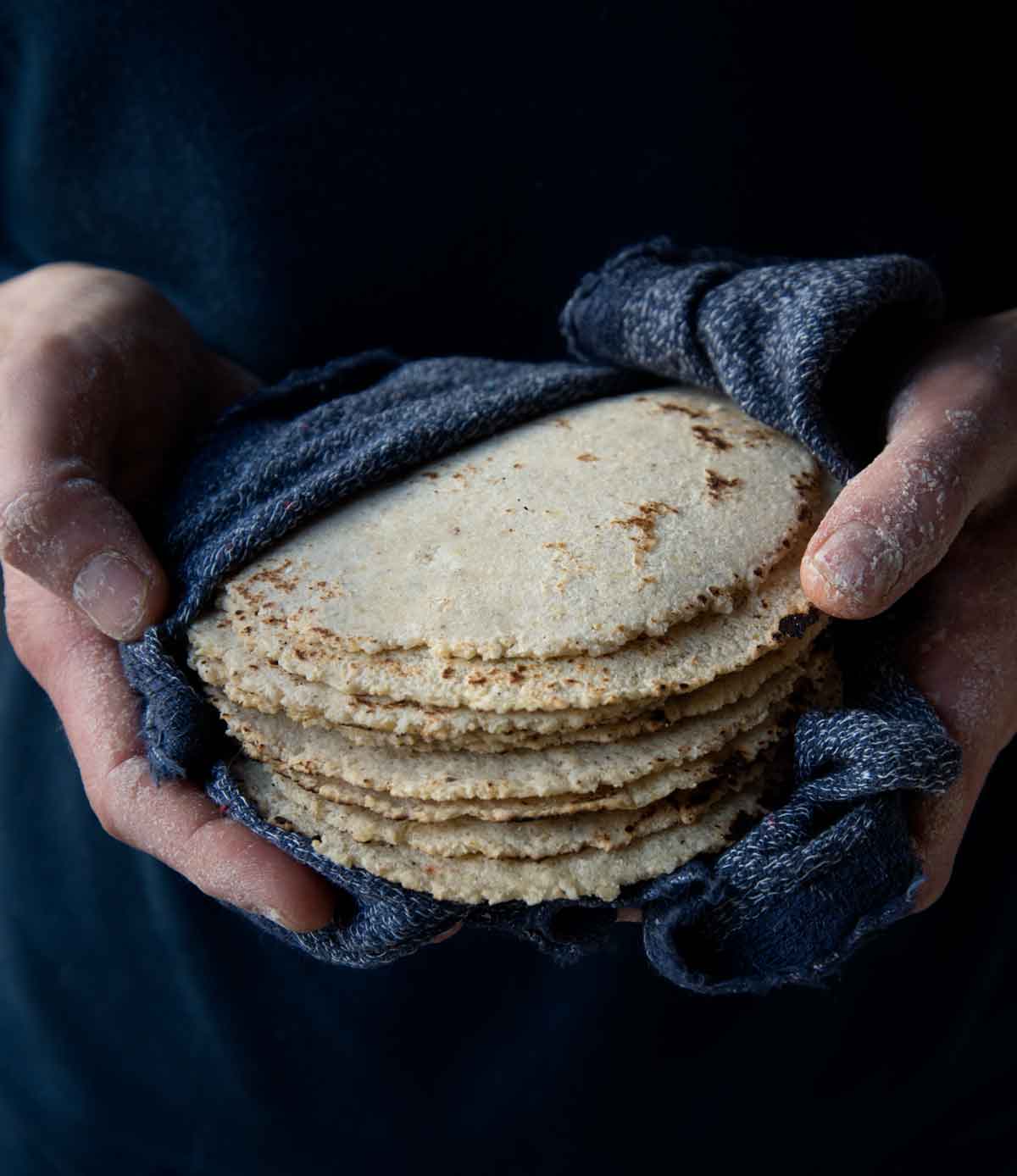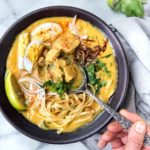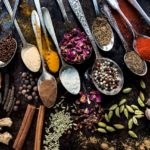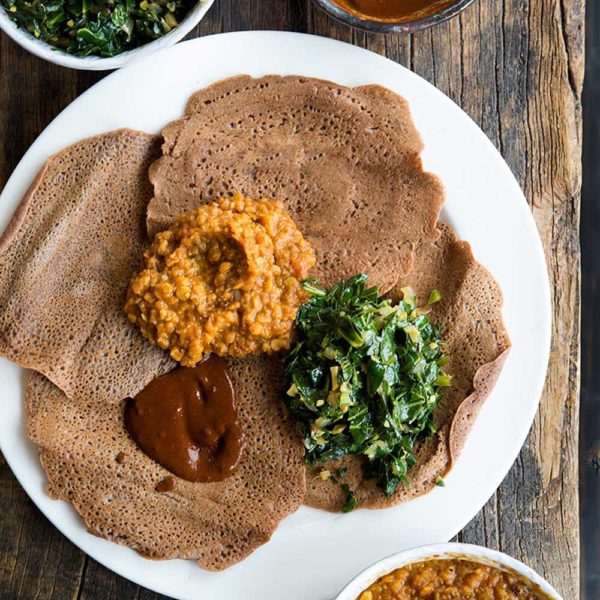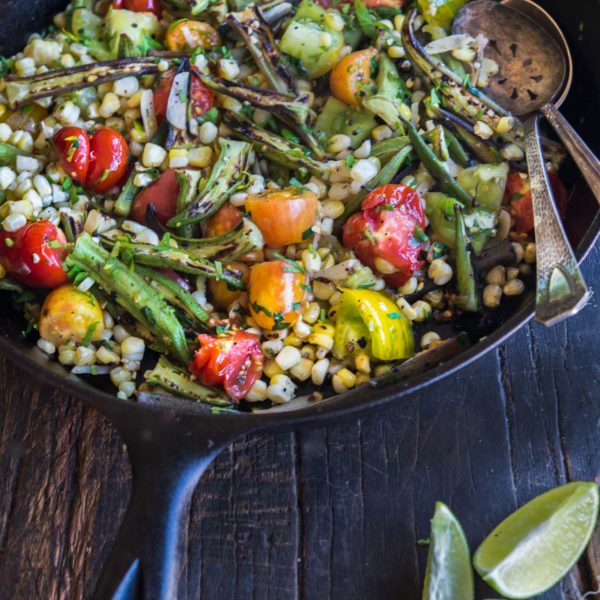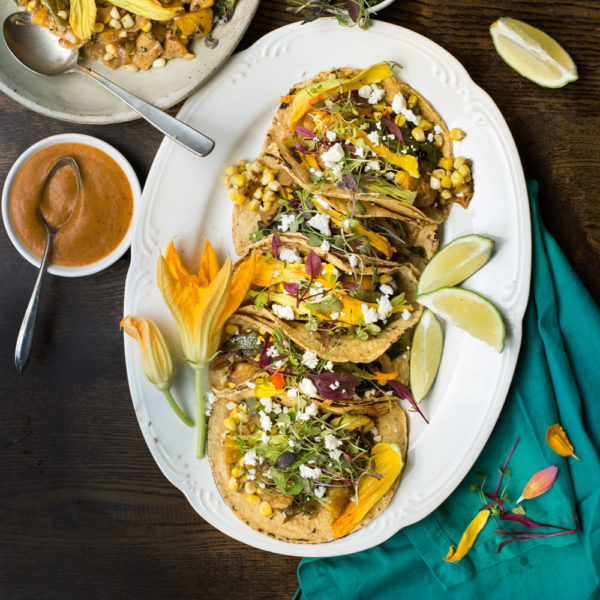What originally drew me to this food blogging space was having a deeper connection to where and how food is grown and produced. In our ever-increasing, fast-paced world of convenience, we can tend to take for granted the labor (and love) of food production — from caring for the soil to sowing the seeds to tending to the plants to harvesting them, and then transforming them into the foods we so enjoy.
As someone who comes from a science background, I’ve always been intrigued by the process as much as by the end result. Maybe you won’t make masa or tortillas every day, but going through these vital steps might leave you with a deeper appreciation for the hard-working indigenous farmers who still grow these rare heirloom varietals of corn. As well, you get to experience the process from start to finish, that is, being able to touch, smell, taste and feel the corn every step of the way.
Nixtamalization is an ancient technique that refers to dried corn kernels that have been treated with an alkaline solution, cooked, steeped for several hours and rinsed.
Nixtamalization comes from the Nahuatl (Aztec) words nixtli (ash) and tamalli (dough).
There is historical evidence dating the nixtamalization process to around 1,500 B.C. in the coastal region of Guatemala. Indigenous people of this region figured out that cooking dried corn in alkali water (or wood ash) yielded a softer dough than unprocessed ground corn.
Similar to the discovery of fermentation as a means of preserving/storing food, our ancestors had wisdom beyond their years. Intuitively, they invented ways to fuel themselves and ward off disease, as there are inherent health benefits with these processes, without the yet-to-be-discovered scientific ‘evidence’ or proof, per se, of why or how things worked. As the saying goes, “Absence of evidence is not evidence of absence.”
The caustic alkaline solution of calcium hydroxide (pickling lime) — with a pH of 12.4 — partially degrades the plant’s cell walls. More recently, food scientists learned that nixtamalization increases the bioavailability of protein and niacin and also reduces toxins often found in moldy corn. Nixtamalization also fortifies the corn’s calcium and helps it to maintain its fiber content. The resulting dough, otherwise known as masa, is the basis for corn tortillas, tortilla chips, tamales and corn-based porridges; whereas, whole corn that has been nixtamalized is called hominy or posole.
For nixtamilzation you need: 1) corn and 2) alkaline water (e.g., calcium hydroxide). However, the corn you need to make masa is different than the sweet corn you find in your grocery store or farmers’ market. In the United States, corn is classified into six groups: 1) dent/field, 2) flint, 3) flour, 4) sweet (what you find in the grocery store), 5) pop and 6) pod. Corn with a starchy endosperm (dent or flint) works best for masa.
Corn is a human invention, a plant that does not exist naturally in the wild. It is thought that people living in central Mexico developed maize at least 7000 years ago, cultivated from a wild grass called teosinte. Different from our strains of maize and sweet corn today, the kernels of teosinte were small and spaced far apart.
Where to purchase corn for making masa?
Given that the United States (and, for that matter, the world) produces so much corn, you’d think that finding corn to make masa would be straightforward. Instead, the vast majority of corn produced is industrialized, super high-yielding genetically modified or modern hybrid corns dependent on heavy pesticide and herbicide use.
As an interesting side note, Mexico prohibits the commercial production of GMO crops. However, Maseca corn flour, one of the most widely available corn flours (produced in Mexico) used for tortillas tested positive for the presence of GMOs as well as concerning rates of glyphosate, the main ingredient in Monsanto’s Roundup weedkiller.
That being said, in specific regions of Mexico there are still at least 59 recorded unique native landrace corns — domesticated heirloom varieties — being produced. If you’re looking to purchase one of these varieties, here’s a good place to start.
I used a white (Olotillo) rare, heirloom Oaxacan corn that I purchased from Masienda. If you have some free time, I highly recommend spending some time perusing Masienda’s site. There are some great videos that explain corn’s fascinating story.
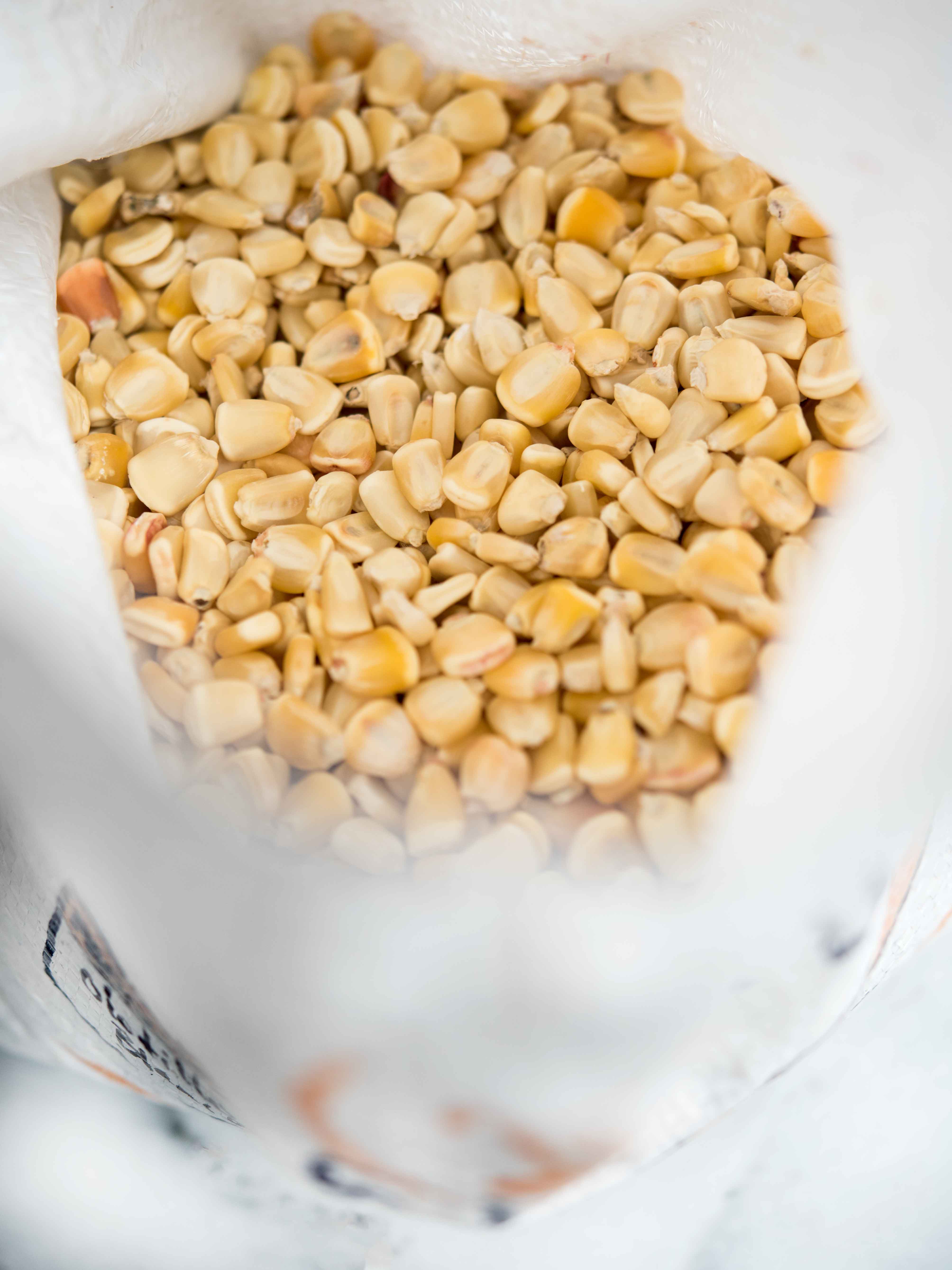
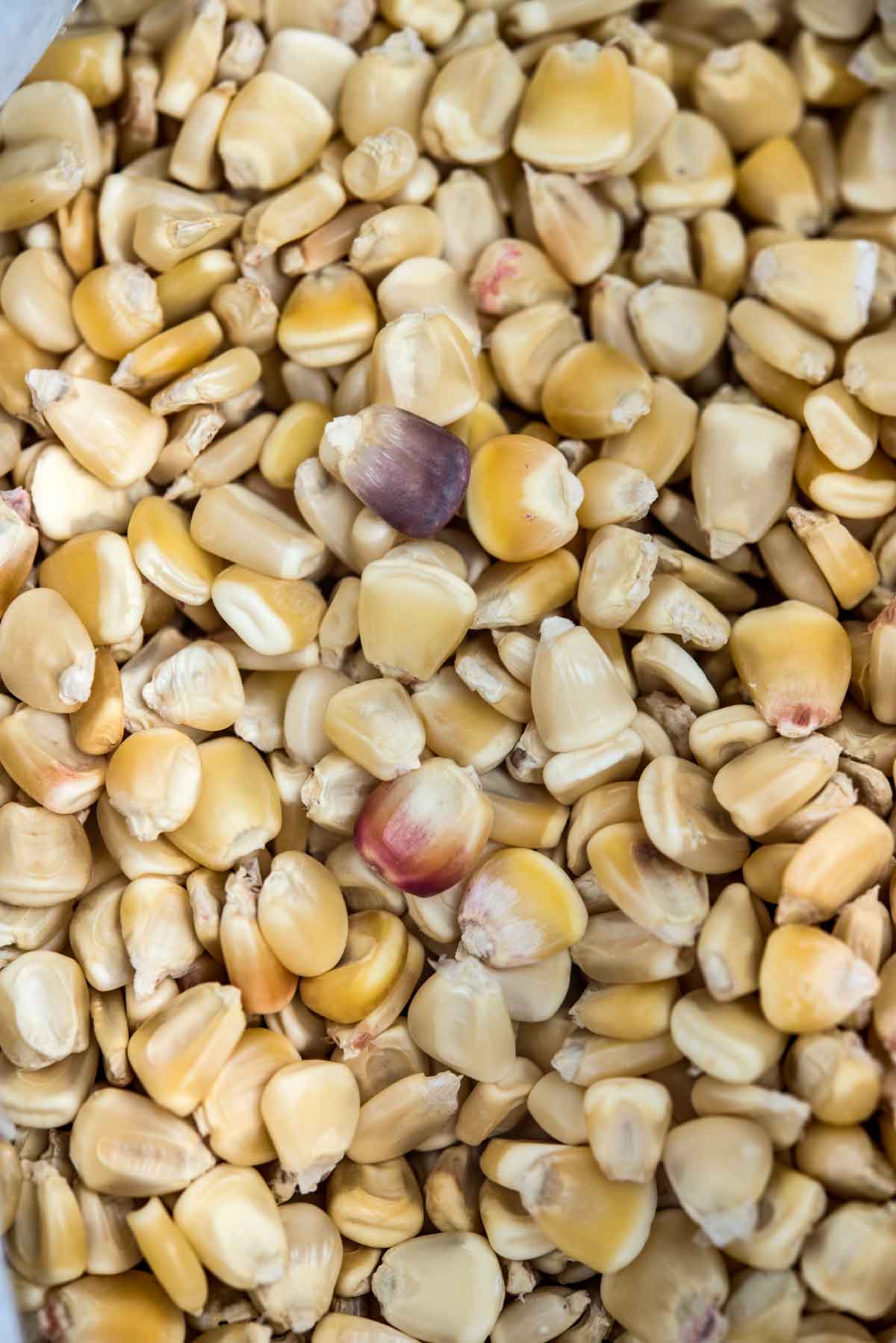
It’s recommended that you use 1% pickling lime (such as Mrs. Wages) food grade calcium hydroxide (lime) to total weight of corn. For example, for 1 pound (454 grams) of corn, I used 2 teaspoons (5 grams) of calcium hydroxide.
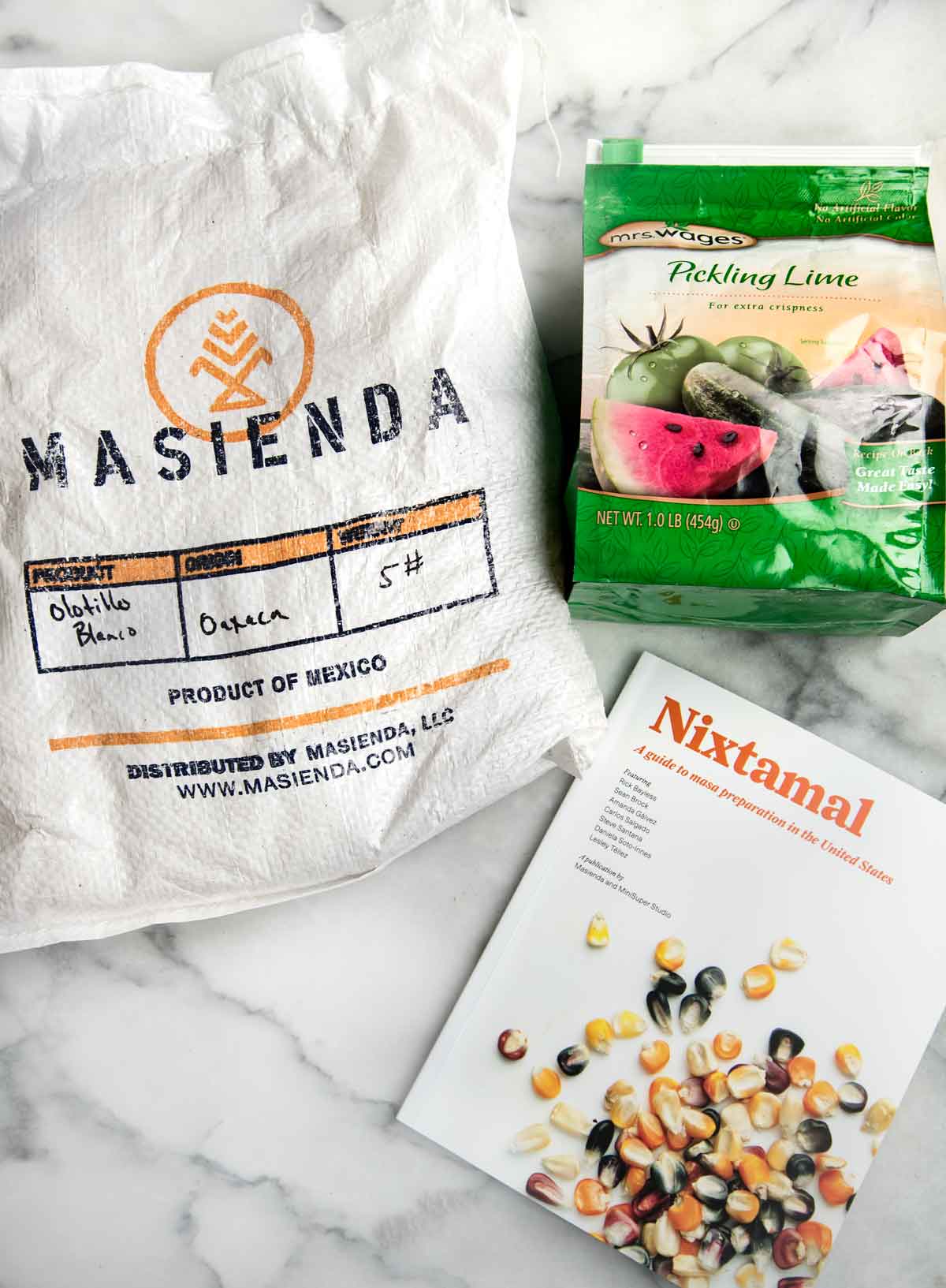
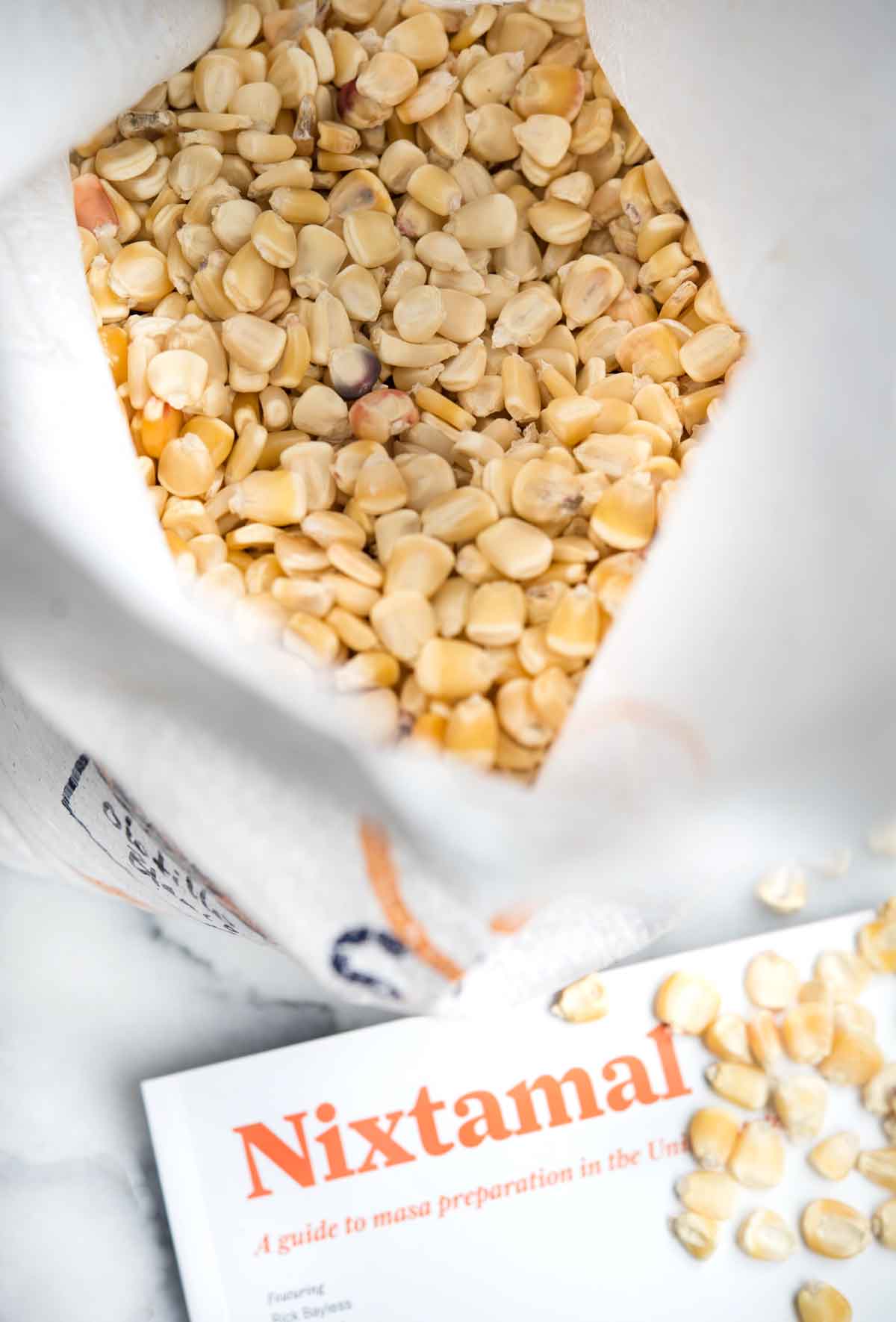
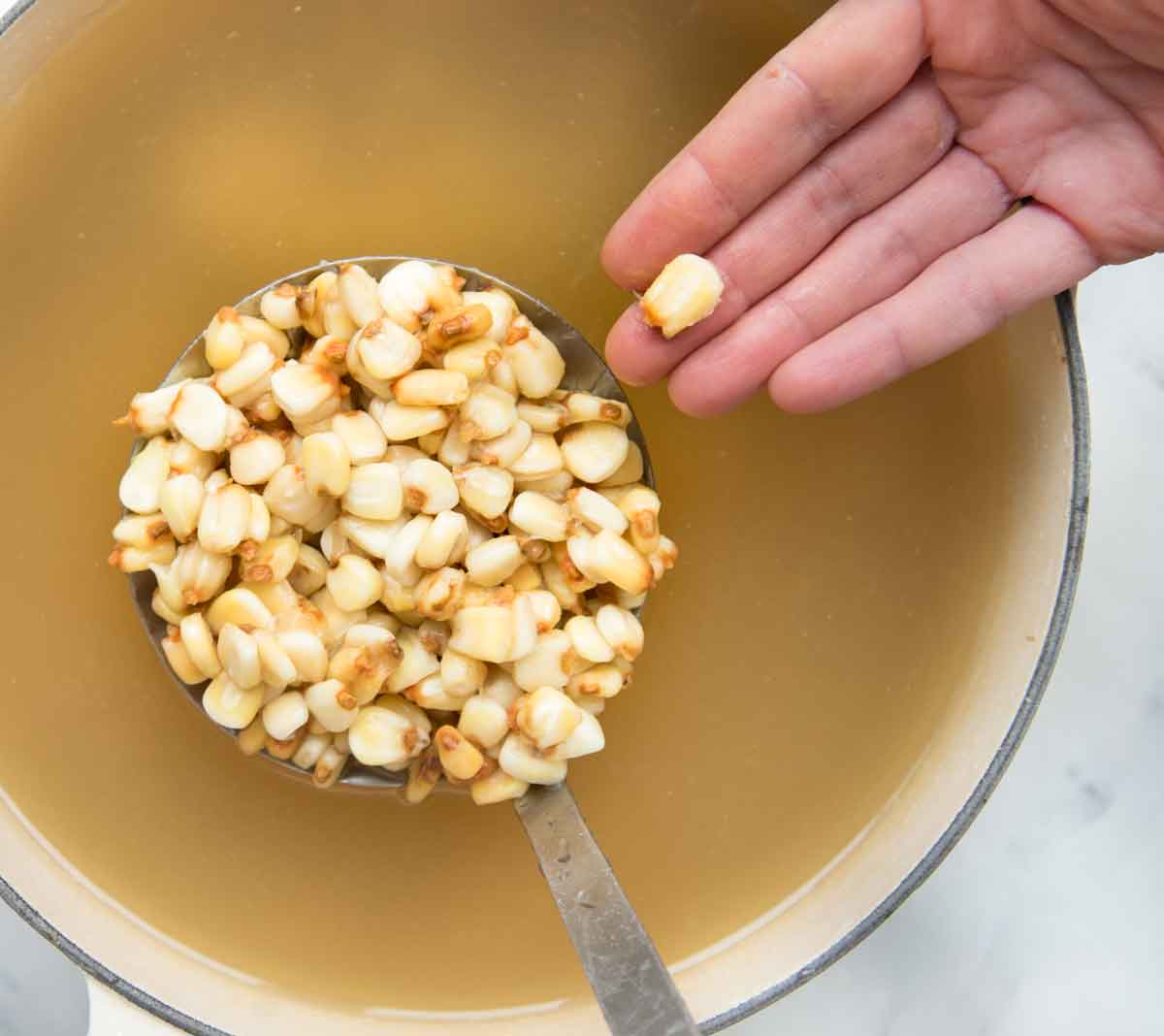
After simmering in the pickling lime-water and then sitting for 8-12 hours overnight at room temperature, the outer skin (pericarp) of the kernels will dissolve as the grain softens.
The next step is to drain the nixtamalized corn in a colander and run under cold water, rubbing off any outer skin that may still exist.
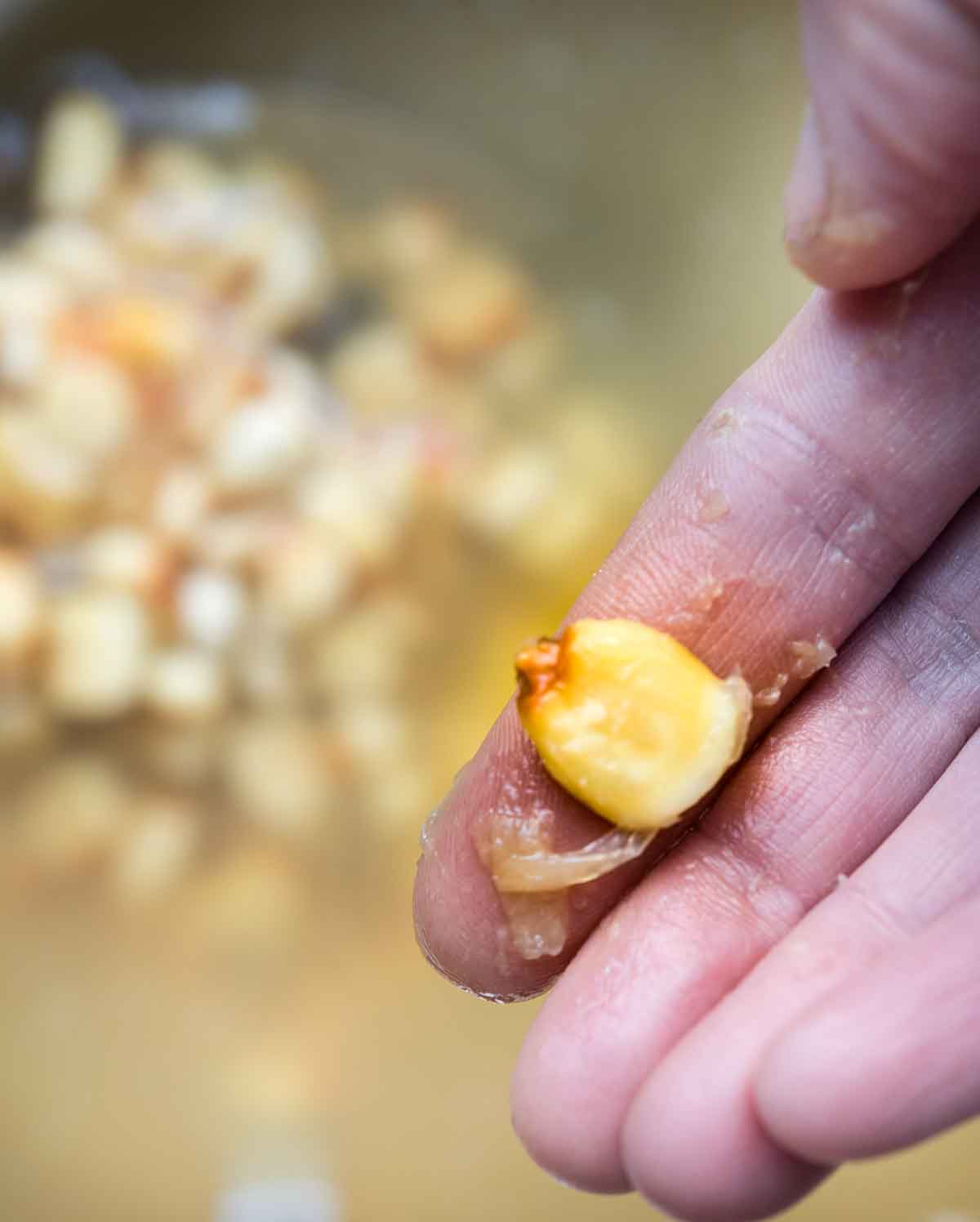
Processing the alkalized corn to masa
Traditionally, a metate, a pre-historic lava rock stone and rolling pin, is used to grind the corn.
Instead of a metate, I used my food processor to grind the nixtamalized corn. This will take a good 10 minutes of scraping down the bowl and processing until fairly smooth (it’s challenging to break down all the corn using a food processor, but it does a decent job). You’ll need to add a little water, a tablespoon at a time, to get the food processor going. I ended up adding around 5 to 6 tablespoons of water for 1 pound of corn (plus 1 teaspoon salt).
The masa should be soft, but not too sticky, and easily form into a ball, about the size of a golf ball.
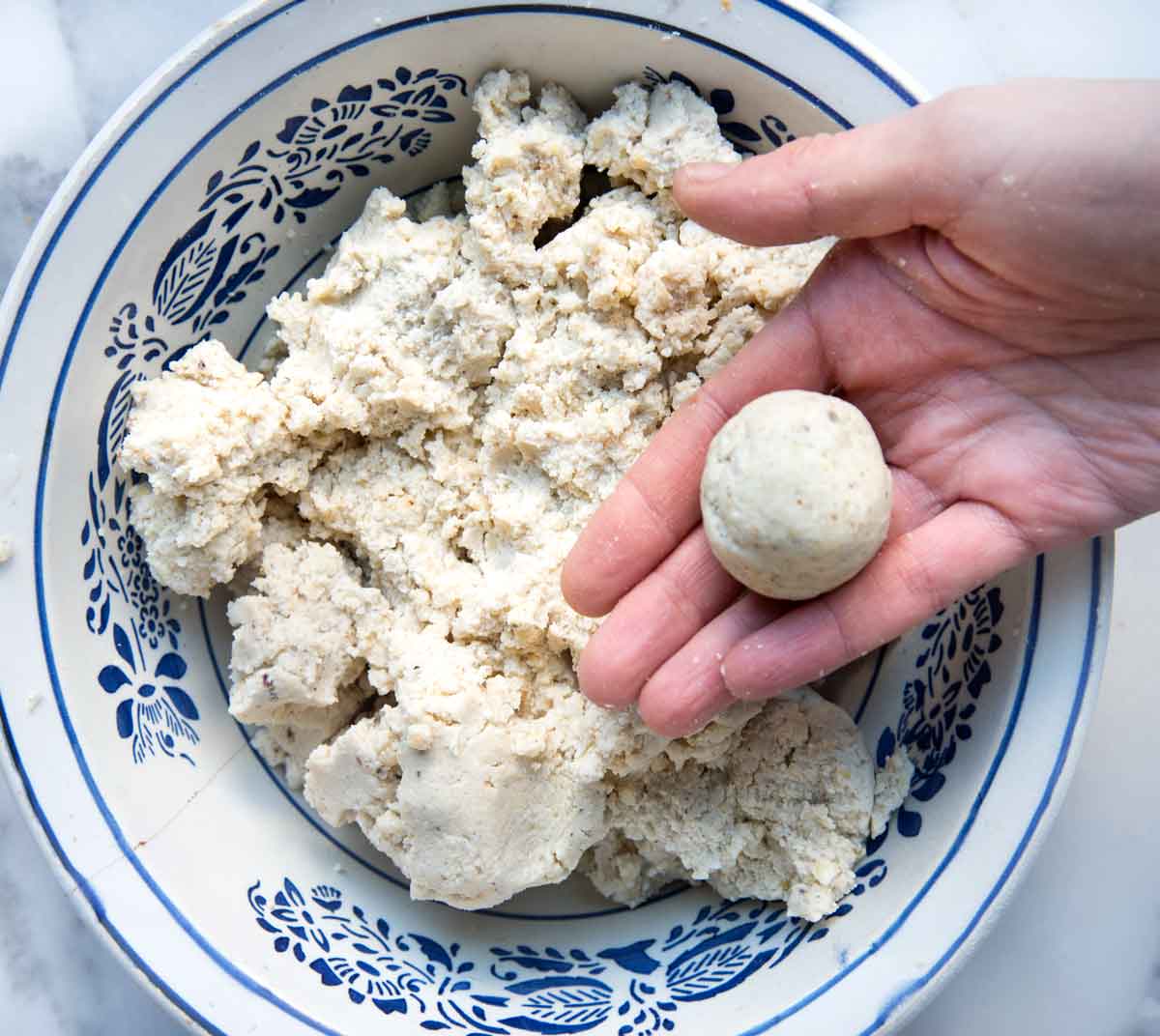
Now, time to make tortillas…
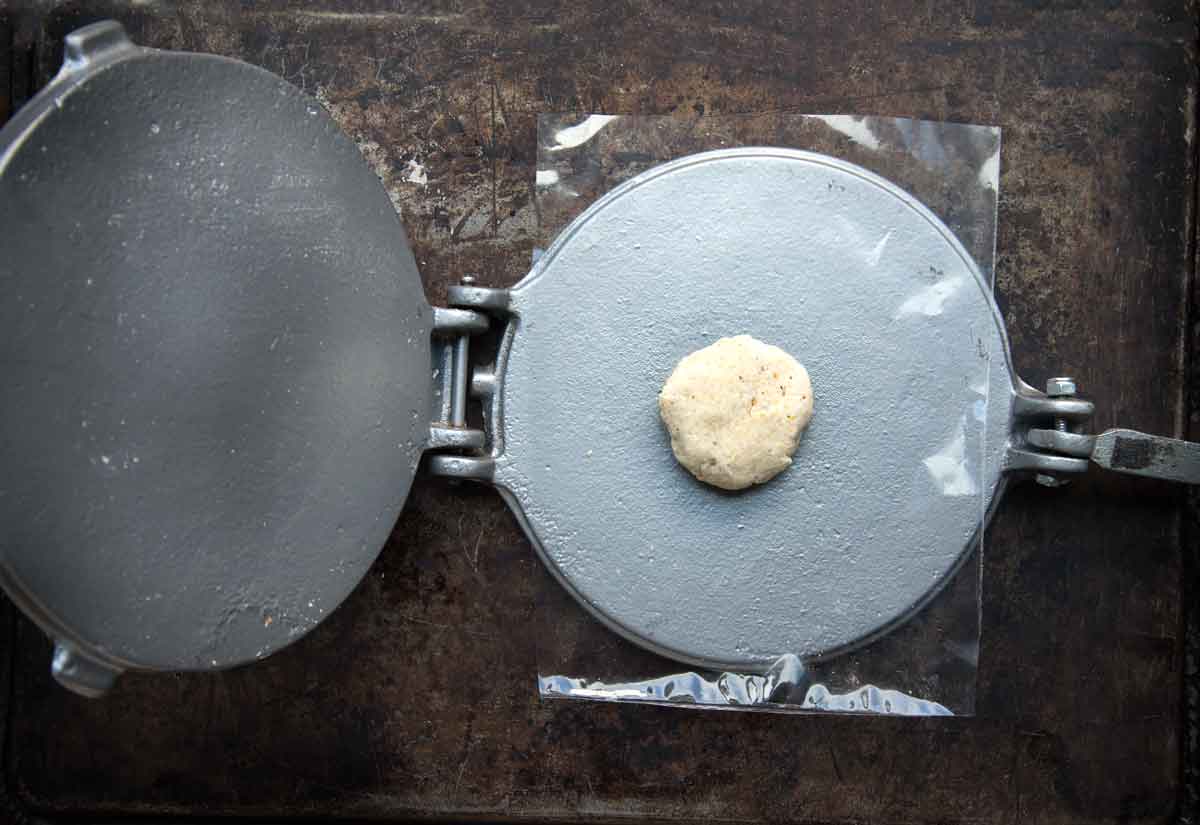
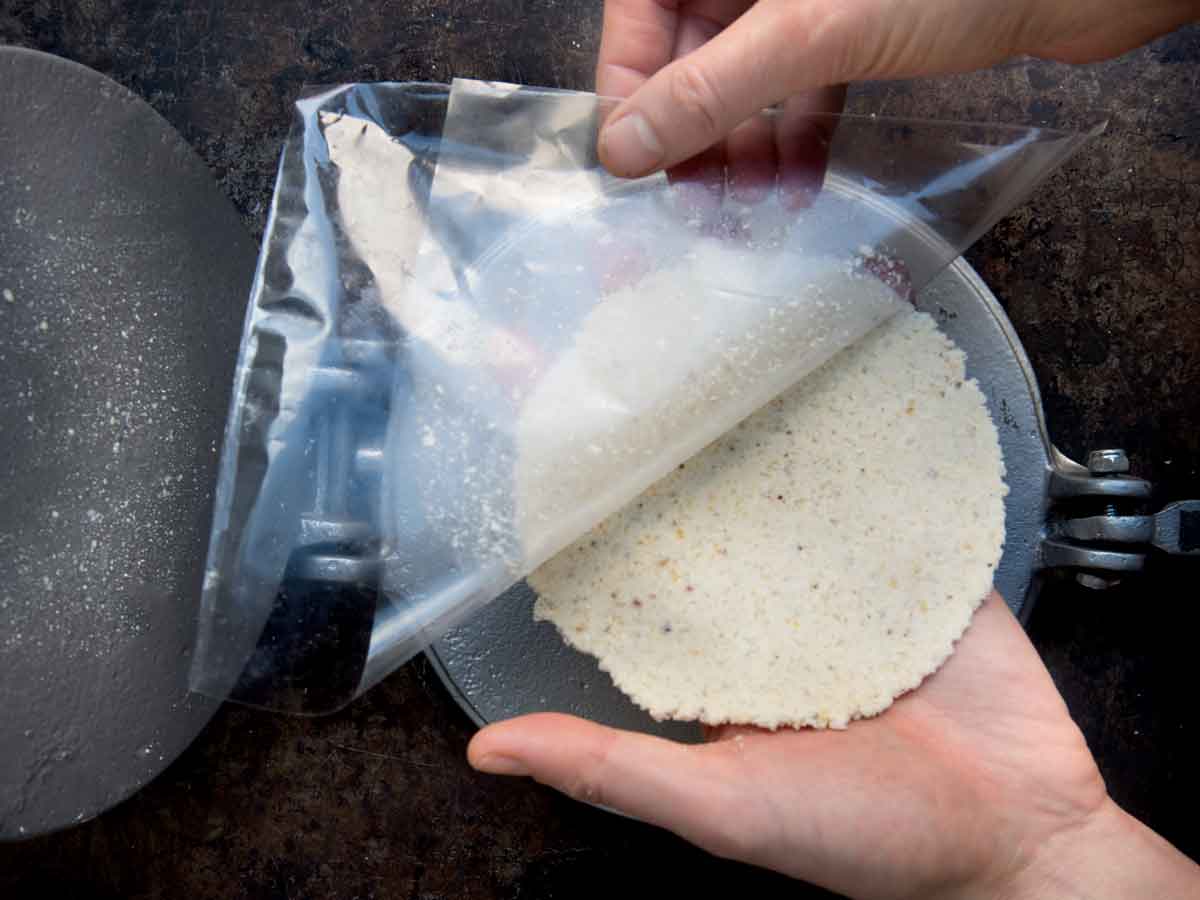
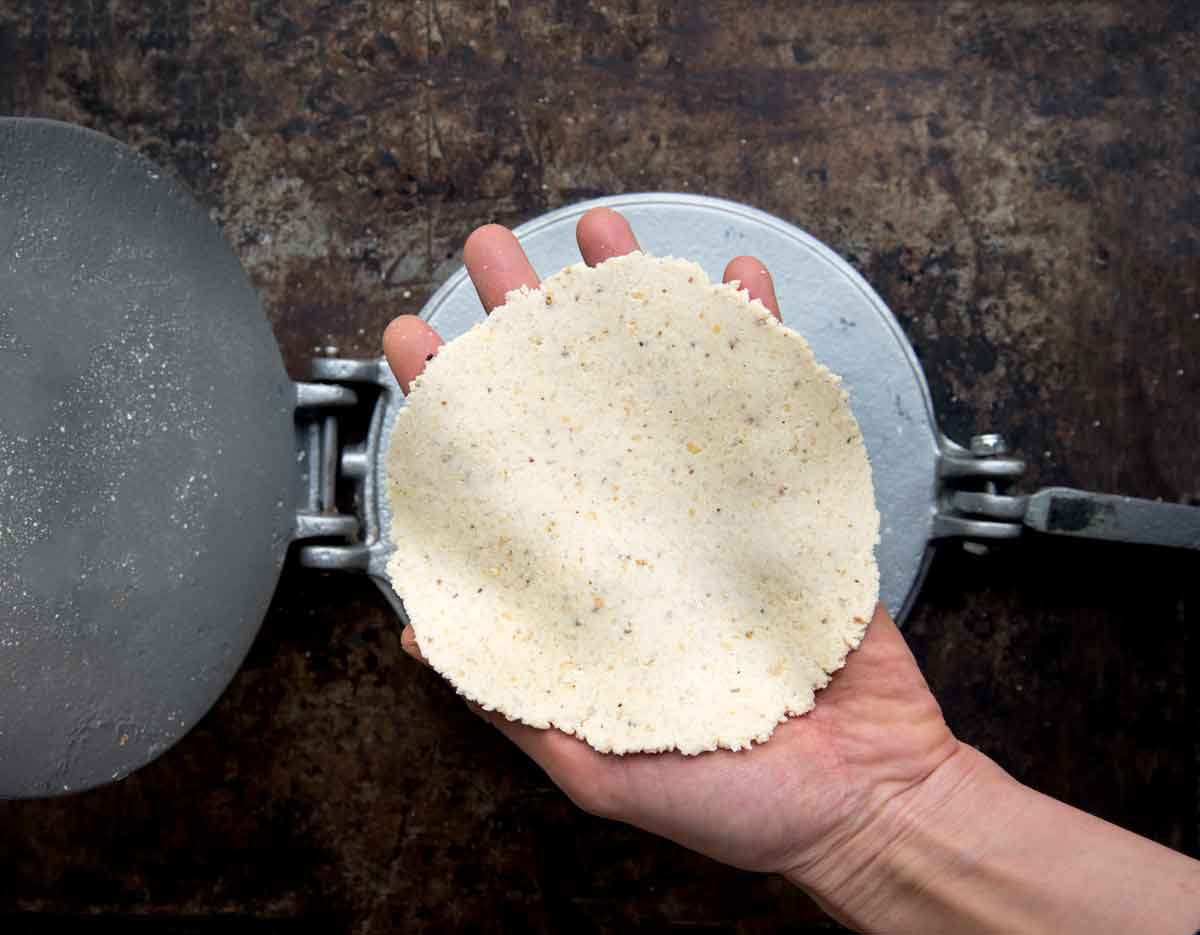
As for cooking the tortillas, I followed Rick Bayless’ advice of creating a cooler and hotter spot on a griddle. Actually, I don’t have a griddle, so I heated one skillet to medium heat and another to medium-high heat to create the same effect.
I started in the cooler pan, by gently laying the tortilla in the pan and cooking for 25-30 seconds as it releases from the pan. Then, I carefully transferred the tortilla to the hotter skillet for 30 seconds. After 30 seconds, flip and press down on the tortilla to help it puff up. Cook for another 30 seconds and transfer to a clean kitchen towel to keep warm. I placed the towel in a bowl and covered with a plate. This will not only keep the tortillas warm, but steam them a bit, which in turn will slightly soften the tortillas.
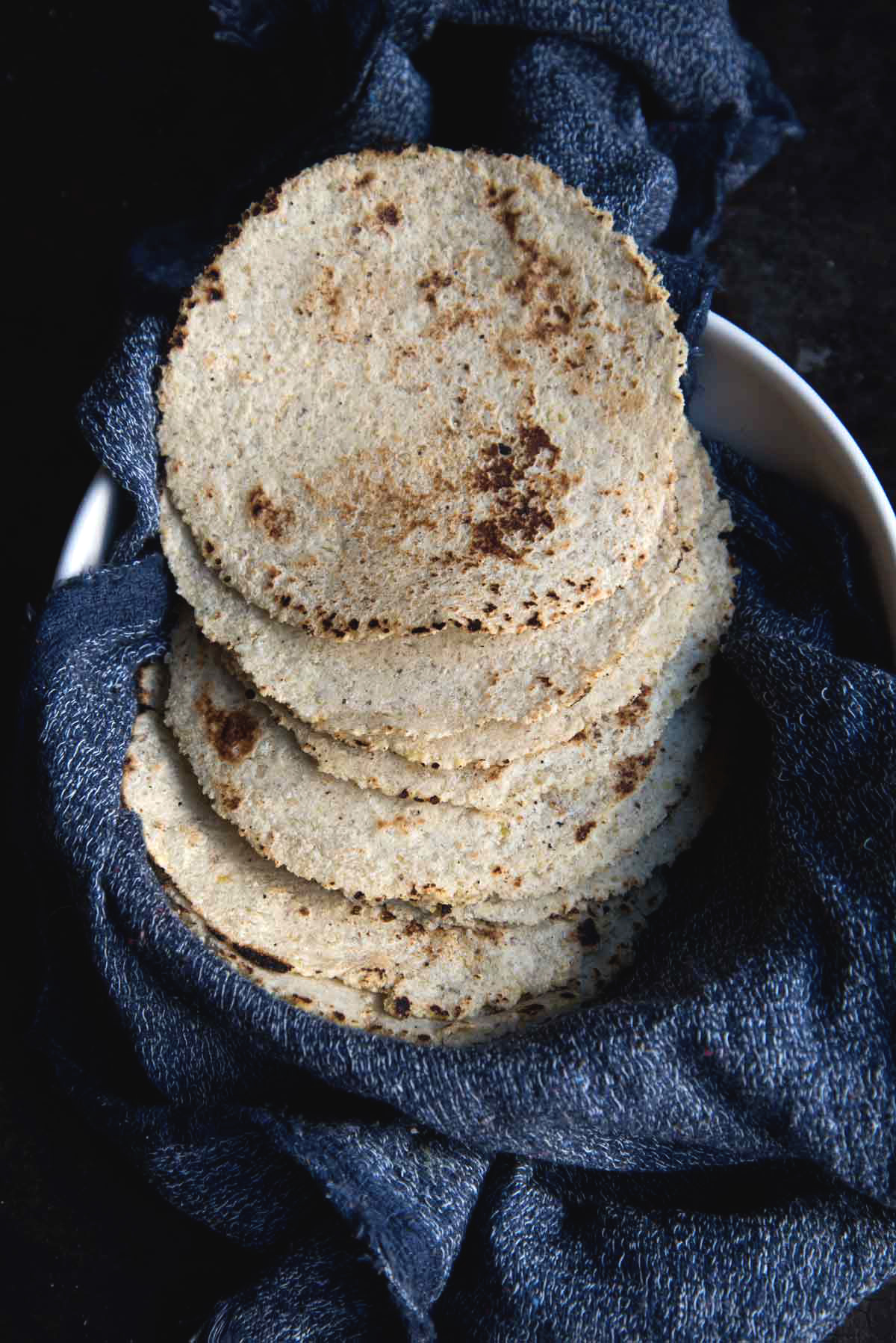
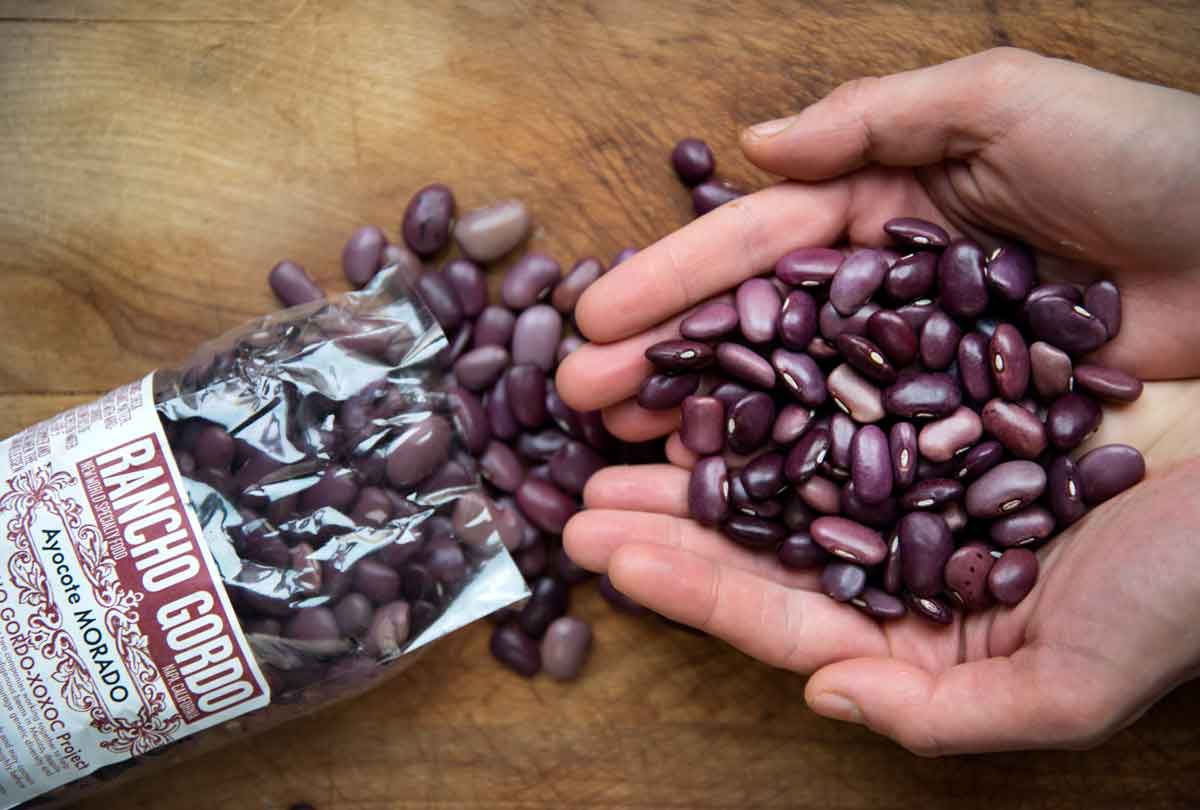
Lastly, ayocote morado beans (mashed with garlic, cumin, habanero, chipotle, cilantro) with roasted poblano, pickled red onion, avocado, homemade three-chile salsa and queso fresco.
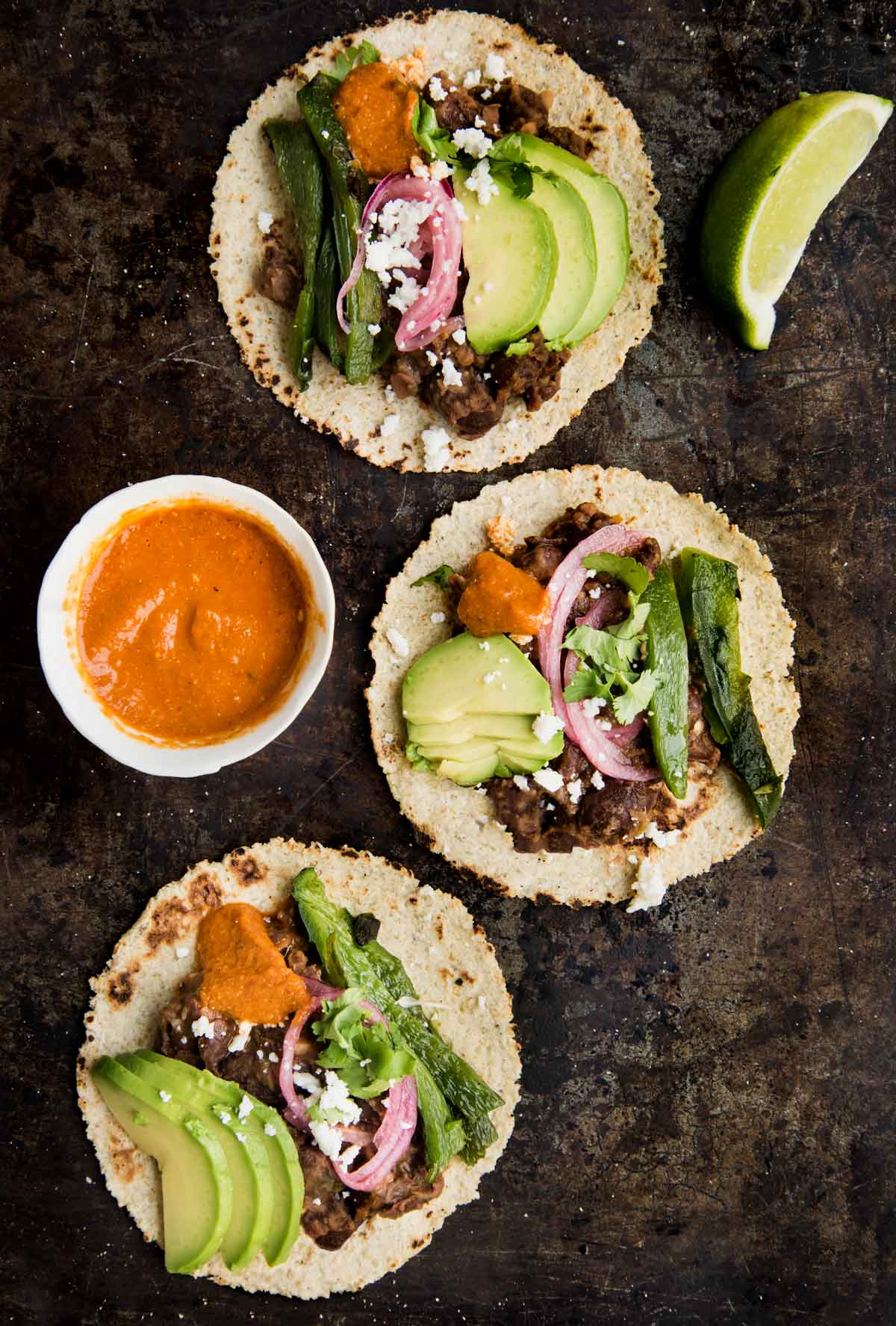
Homemade Masa Nixtamal (Corn Tortillas)
Makes about 20 (5-inch) tortillas
1 pound (454 grams) dried field corn (I used Masienda white corn)
2 teaspoons (5 grams) food grade calcium hydroxide/pickling lime (used Mrs. Wages)
1 teaspoon (5 grams) salt
In a large, non-reactive pot, bring 12 cups of water to a boil. Add the calcium hydroxide, whisking to combine.
Add the corn and bring back to a boil. Turn down the heat and simmer for *30-40 minutes, uncovered, stirring regularly.
Start checking the kernels after 20 minutes, cutting them in half with a knife to gauge their progress. When kernels are ready, they will be translucent on the outside and opaque on the inside. I ended up cooking closer to 40 minutes.
Turn off the heat and transfer the corn and its liquid to a large bowl. Add 4 cups ice cubes and 4 cups cold water.
Cover and let sit overnight at room temperature.
Drain the corn in a colander under cold water, rubbing the kernels between your fingers to remove any pericarp (outer skin) that still remains.
Place the corn in a food processor, along with the salt, and process until smooth. This will take a good 10 minutes of scraping down the bowl and processing until fairly smooth (it’s challenging to break down all the corn using a food processor, but it does a decent job). You’ll need to add a little water, a tablespoon at a time, to get the food processor going. I ended up adding around 5 to 6 tablespoons of water, for 1 pound of corn (plus 1 teaspoon salt).
NOTE: If you’re not feeling this adventurous, you can make homemade tortillas using dry masa harina. In the past, I’ve used Gold Mine organic white masa harina and organic blue masa harina.
To Form the Tortillas
Pressing the tortillas: Cut two squares of plastic slightly larger than the size of your tortilla press (from a large zip-lock bag). Line the bottom of the tortilla press with one square of plastic. Break off a piece of dough and form it into a ball, about the size of a golf-ball (make sure to keep the rest of the dough covered to prevent it from drying out). Lay the piece of dough on the plastic in the center of the tortilla press. Lay the second piece of plastic on top of the dough. Close the press and gently squeeze to form the tortilla, about 1/8″ thick and 4″ in diameter. Open the press, remove the top plastic. Gently flip the tortilla over on to your other hand, and carefully peel the other piece of plastic off the tortilla.
Cooking the tortillas: Heat a large griddle, creating a cooler zone (medium heat) and hotter zone (medium-high heat); you can create the same effect with two cast iron skillets. When the griddle/skillets is hot, gently lay the tortilla in the pan and cook for 25-30 seconds as it releases from the pan. Then, carefully transfer the tortilla to the hotter skillet for 30 seconds. After 30 seconds, flip and press down on the tortilla to help it puff up. Cook for another 30 seconds and wrap in a clean kitchen towel to keep warm.
Repeat: Press and cook remaining tortillas. Stack each baked tortilla on the previous one. Keep tortillas well-wrapped in the towel so they stay warm.
